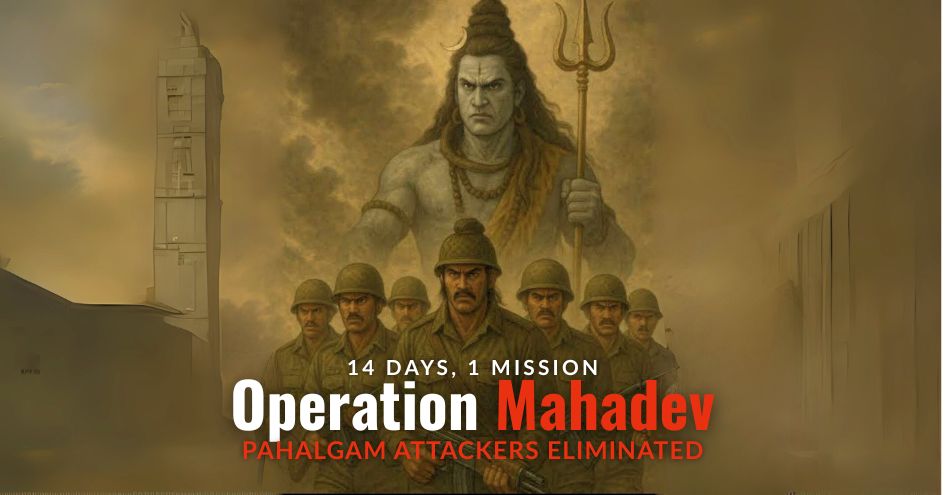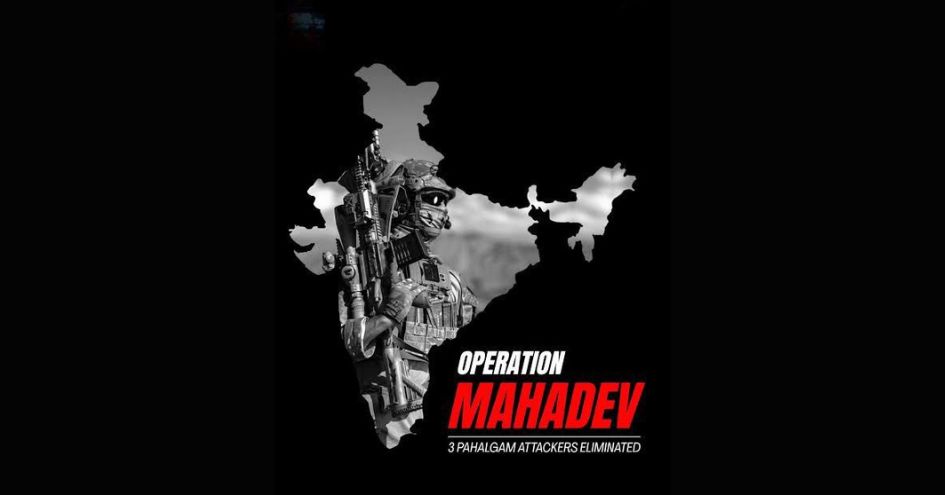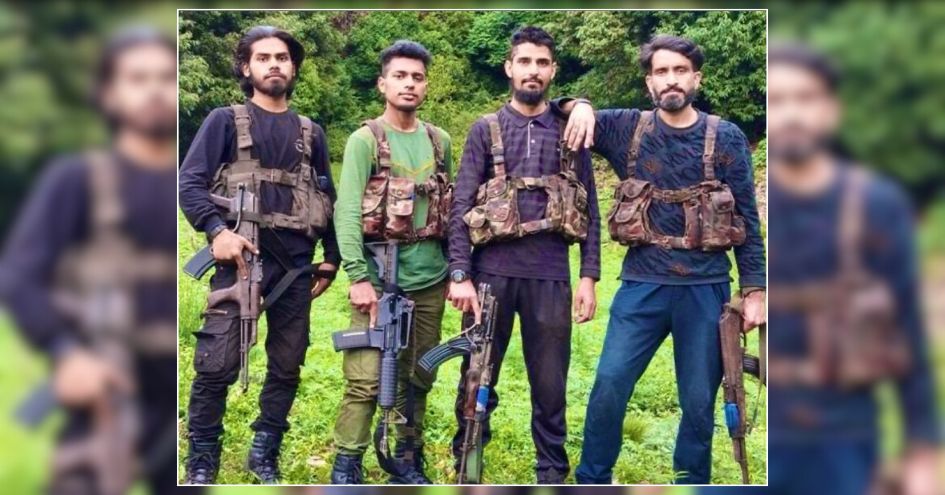
14 Days, 1 Mission, Mahadev Peak: How the Pahalgam Mastermind Was Hunted Down. A nail-biting, cinematic retelling of Operation Mahadev.
DAY 1 – Shadows over Mahadev
The silent forests beneath Mahadev Peak, towering over the scenic Dachigam valley, hid a dark secret. After the blood-soaked tragedy in Pahalgam, India’s elite counter-terrorism units vowed retaliation — not in haste, but with precision. Deep in the wild, at 12,000 feet above sea level, surveillance teams intercepted encrypted Chinese military-grade communication signals — cold, coded, and deadly.
The chatter was unmistakable: “WY-SMS”, the infamous communication protocol once used by Lashkar-e-Taiba in 2016, was back. Its origin? Somewhere in the icy wilderness of Mulnar, Harwan, at the base of Mahadev.
The hunt had begun.
DAY 3 – Phantom in the Trees
The intelligence was staggering — the mastermind of the Pahalgam attack was hiding here:
Suleiman Shah, alias Hashim Musa, a ghost with a blood-soaked legacy.
A former commando of Pakistan Army’s Special Services Group (SSG), Shah had vanished into Lashkar’s shadowy world years ago. Hardened in jungle warfare, survival, and insurgency tactics, he had become a myth until now.
Using satellite imagery, ground reconnaissance, and direction-finding radars, the Indian Army and intelligence agencies triangulated the source of the encrypted signals. The needle pointed toward a camouflaged cluster of hideouts deep in the Mulnar jungles — possibly an operational base.

DAY 5 – The Steel Web Tightens
The Army’s elite Para commandoes (Special Forces) were inserted into the periphery — silent, unseen, and in pairs. Meanwhile, technical intelligence confirmed multiple foreign fighters were in the area. The jungle was rigged — escape tunnels, booby traps, motion sensors. The teams would need patience and planning. The snow-fed streams nearby ran cold and fast — masking every footfall.
The op was codenamed: Operation Mahadev — not only after the sacred peak, but also the divine destroyer in Indian mythology. Destruction of evil was imminent.
DAY 9 – A Clue in the Static
At 0400 hours, the SIGINT team intercepted a short-range encrypted message: “Move before full moon.”
The implication was chilling: the terrorists were preparing for a high-profile attack, possibly on a civilian target in Srinagar during the Amarnath Yatra. The operation could no longer wait.
The next 48 hours would be a race against time.

DAY 11 – Final Lock-On
Using drone surveillance with infrared vision, a brief movement was detected near an abandoned shepherd hut — a brief glint of metal in the undergrowth. It was confirmed: Shah and at least two more foreign fighters were present — all Category A++ targets, armed with carbines, AK-47s, and grenade launchers.
The Army sealed off the escape routes. Infiltration teams were silently positioned along the ridges. The entire forest was now a pressure cooker, and the lid was about to blow.
DAY 13 – The Reckoning Begins
At 0200 hours, commandos closed in under moonlight. Pinpoint drone-guided laser designators marked the hideout. As the terrorists shifted positions inside, the assault began. Stun grenades, flashbangs, and burst fire erupted in the still air.
The terrorists retaliated fiercely — using rifle grenades to stall the entry. But the commandos weren’t new to this game. Moving in fireteams, using suppressive tactics and thermal imaging, they pinned down each corner.
After a 6-hour close-quarter firefight, three bodies lay inside. Shah — the ex-SSG ghost — had fallen. Beside him were two more foreign fighters, likely from Jaish-e-Mohammed, as per preliminary intel.
DAY 14 – Aftermath of the Hunt
The post-op sweep recovered:
It was no ordinary cell — this was a mobile command unit, a snake’s head severed.
Back in Pahalgam, tears turned into a quiet prayer. Justice had been delivered. Not with fanfare, but with the cold precision of a nation’s resolve.
Operation Mahadev was more than just a tactical success.
It was a message — that no matter how well-trained, how deep they hide, India’s enemies will be found, cornered, and neutralised.
From the cruel silence of Pahalgam to the roaring mountains of Mahadev, this was a reckoning long in the making.
And it had just begun.
 Wing Commander BS Sudarshan is a former Indian Air Force pilot with over 12,000 flying hours. He participated in Operation Pawan and Operation Cactus before he transitioned to civil aviation. A passionate writer, he has authored six books, including "Hasiru Hampe", appreciated by S L Bhyrappa, and the latest "Evergreen Hampi". He is a regular contributor to the Verandah Club.
Wing Commander BS Sudarshan is a former Indian Air Force pilot with over 12,000 flying hours. He participated in Operation Pawan and Operation Cactus before he transitioned to civil aviation. A passionate writer, he has authored six books, including "Hasiru Hampe", appreciated by S L Bhyrappa, and the latest "Evergreen Hampi". He is a regular contributor to the Verandah Club.
PREVIOUS ARTICLE

At the southernmost tip of this mesmerising ensemble lies the majestic Great Nicobar Island, boasting an impressive landmass of about 910 square kilom...

Bharath has always been a land traversed by spiritual masters/ Guru since time immemorial. These spiritual masters have always upheld the core princip...

South India contains its fair share of unique pilgrimage centres. These divine places of worship have a prominent Sthala Purana, devoted followers, di...